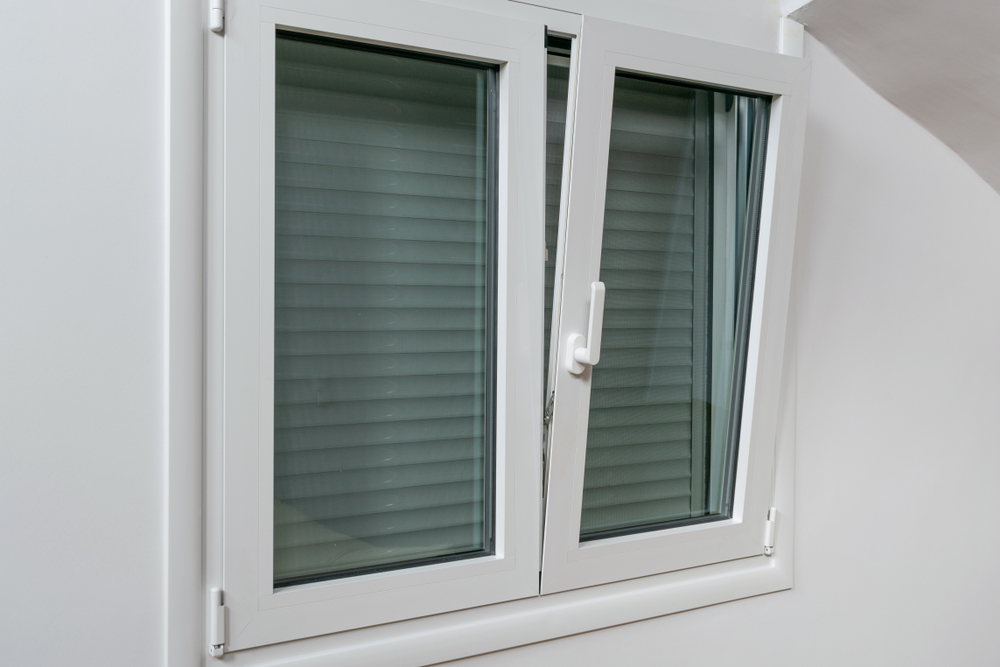Cost of Tilt and Turn Windows
Tilt and turn windows are an attractive, versatile type of glazing, with an average cost of £460 to £510 per window, including installation charges.
Although costs vary depending on several factors, the key benefit is that the windows can tilt inward and be locked into place to provide optimal ventilation without creating a safety or security risk.
Looking for an accurate cost of tilt and turn windows? Fill out the form below and we'll put you in touch with local window fitters in your area - compare costs for free! Time complete - 30 seconds.
Here we'll explain the main elements that impact your tilt and turn window quotations and why the costs may vary depending on the size of your window and the glazing you choose.
Factors That Impact the Average Cost of Tilt and Turn Windows
The first thing a window fitter will ask is about the size of your window and what sort of window frame you'd like.
UPVC is the most affordable frame type, with a standard white frame in an 80 cm x 80 cm window opening costing the lower average of £460.
Wood-grain effect UPVC is a great compromise if you'd like a classic appearance, with the performance and durability of a modern alternative costing around £510 per unit.
Below we've shown indicative prices for both finishes, depending on the window size you require.
| Window type | Average supply cost | Average installation cost | Total average cost |
| White 80 cm x 80 cm UPVC | £280 | £180 | £460 |
| Woodgrain 80 cm x 80 cm UPVC | £330 | £180 | £510 |
| White 100 cm x 80 cm UPVC | £305 | £200 | £505 |
| Woodgrain 100 cm x 80 cm UPVC | £330 | £200 | £530 |
| White 100 cm x 100 cm UPVC | £380 | £230 | £610 |
| Woodgrain 100 cm x 100 cm UPVC | £400 | £230 | £630 |
| White 120 cm x 120 cm UPVC | £405 | £250 | £655 |
| Woodgrain 120 cm x 120 cm UPVC | £430 | £250 | £680 |
Most homeowners find that the price per unit reduces slightly if they purchase multiple windows at once.
For example, extra charges such as scaffolding hire or waste removal to transport the old windows are overall less expensive per window if you have several tilt and turn windows installed simultaneously.
Some window fitters also offer discounts for larger orders, so it's worth checking when you submit your quote request.
Get quotes for new windows
See how we work below.
Additional Considerations in Fitting Tilt and Turn Windows
While the size and finish of your tilt and turn windows will be the guiding factors in your costs, there are other elements to consider.
Although we've looked at UPVC as the most popular option, you can also buy tilt and turn windows with different frame materials:
- UPVC tilt and turn windows are the least expensive option, require very little maintenance and normally come with a 20-year guarantee. White UPVC is widely available, or you can choose coloured or wood effects if you have a particular finish in mind.
- Aluminium tilt and turn frames are more expensive but are extremely durable and secure. The metal is recyclable, but it can be prone to discolouration and corrosion over time.
- Timber frames are traditional but come with a caveat that wood is vulnerable to rot, dampness and mould. You will need to periodically repaint or stain your timber frames, although some high-performance hardwood can last for many years.
Timber is also less cost-effective than UPVC, and you might consider a composite blend containing a mixture of materials.
Next, we'll run through some of the other design and performance choices that will feed into your overall tilt and turn window budget.
Tilt and Turn Window Functions
The advantage of a tilt and turn window is that it opens in various ways, giving you the flexibility to maximise the airflow in your property or improve ventilation while keeping pets and young children safe.
Window fitters can install tilt and turn windows with different tilt directions depending on your preferences. They will often be able to recommend a solution depending on the layout of your property and any space restrictions.
Tilt and Turn Window Glazing
Most window frames come with double-glazing as the most popular glass, but you can choose from a vast array of different glazing styles, which is valuable if you live in a high noise or pollution environment.
Examples include:
- Triple-glazing: higher priced than double-glazing, with an additional glass panel within the unit. This glazing type is insulative and provides extra protection from heat dispersion.
- Soundproof glazing: acoustic glass reflects sound waves, so you can use it in homes close to airports or motorways to ensure external noise doesn't disturb you when you are at home.
- Solar control treatments: solar control films work like acoustic glass, but focus on UV rays. If you have larger windows on a south-facing property, this film prevents your home from overheating in the summer while preserving warmth in the winter.
- Laminated glass: toughened glazing is worthwhile if your tilt and turn windows are positioned in the lower aspect of your wall. Building regulations may require it if there isn't a reasonable space between the floor level and the start of your window frame.
Any advanced glazing comes at a slightly higher price point, although it can be worthwhile and add to the value of your home if you ever decide to sell.
Benefits of Choosing Tilt and Turn Windows for Your Home
Why choose tilt and turn windows over a conventional casement window? Here are some of the advantages to consider:
Design Flexibility and Improved Ventilation
The adjustable tilt and turn window design makes it ideal for homes needing excellent ventilation but without wanting to leave windows open throughout the day.
You can partially open the window using the tilt function, boost airflow and reduce dampness, or opt for the turn feature to fully open the panel.
Tilt and turn windows are also adjustable so that you can move the window to a different angle. If it's raining outside, you tilt the glass away from the direction of rainfall to avoid water ingress.
Space Saving Windows
These windows are great for smaller spaces or where you don't have sufficient room to open a standard window either outward or inward.
For example, if you have a wall close to your window or want a window in a bathroom with the privacy of a partial opening mechanism, a tilt and turn window is a perfect choice.
User-Friendly Functionality
Tilt and turn windows are easy to keep clean and maintain.
Because of how the window manoeuvres, you won't need to climb a ladder or use an extended brush to reach the upper floor and can simply turn the glazing inward to keep your windows in good condition.
Excellent Insulation Properties
The air seals in a tilt and turn window unit are superior to those in sliding, single or double-hung frames, which means your glazing is less exposed to cold draughts or water leakage.
Improved insulation should save on your utility costs and preserve heat.
Maximised Outdoor Views
If you have a large window you wish to replace, tilt and turn glazing is a good choice since it delivers an unobstructed view of the outdoors while amplifying the natural light in your home.
Built-in Safety Features
Finally, the safety features of tilt and turn windows are important for families with younger children, especially if you are replacing windows on the upper floor.
You can open the glazing to ventilate your property without concerns about a fall risk or the potential for fingers to get trapped in the mechanism.
Due to this performance element, tilt and turn windows are also regularly used as a fire escape.
Checkout this video which shows some tilt and turn window options:
Frequently Asked Questions - Cost of Tilt and Turn Windows
Below we've answered some of the most commonly asked questions about how tilt and turn windows work and how much they cost!
Can I Open a Tilt and Turn Window All the Way?
Yes, tilt and turn windows are very popular because they're practical and versatile.
The windows open two ways - either fully (like a casement window) or tilted inward from the bottom of the unit, so the top of the glazing tilts inwards, angled towards your room.
Are Tilt and Turn Windows Suitable for Security?
If you're worried about security, then a tilt and turn window is probably the safest window style you can choose! Glazing experts normally recommend this window style because the window functions well to avoid tampering but enables partial openings.
The best option is to ensure you have strong hardware such as locks and perhaps a multi-point lock so your window can't be opened or broken into.
UPVC windows have a robust frame, so they are very difficult to damage, with double-glazing glass almost impossible to smash without incredible force.
Can I Replace a Large Window With a Tilt and Turn Frame?
You certainly can! While we've given the prices for some of the standard window sizes in the UK, fitters can often accommodate a range of dimensions.
The maximum size is normally up to 100 cm wide and 225 cm tall, equivalent to an impressively sized picture window!
If you have a non-standard window, or need a tilt and turn window unit to fit a custom space, the costs will be higher but an experienced glazer will be able to organise this work for you.
Related Reading
- https://www.checkatrade.com/blog/cost-guides/tilt-turn-windows-price/
- https://priceexperts.co.uk/window-prices/tilt-and-turn/
- https://www.windowsguide.co.uk/windows/tilt-and-turn
Get quotes for new windows
See how we work below.


